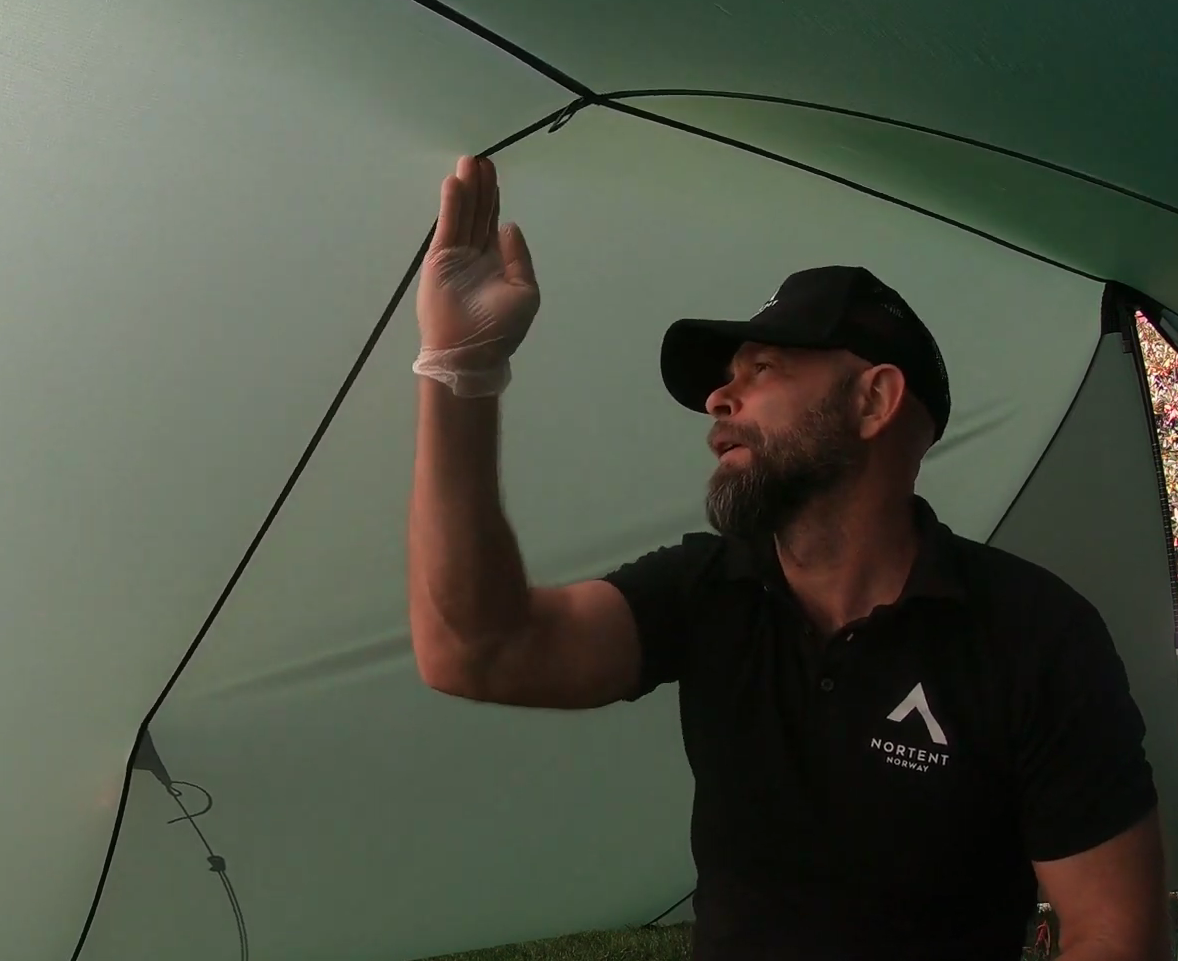Sømforsegling. Hva?
Et vanntett telt er avgjørende for en komfortabel og tørr opplevelse utendørs. Vi forstår forventningen om vanntette sømmer rett fra fabrikken. Derfor er det viktig å påpeke at, i de fleste tilfeller, er sømforsegling på våre telt unødvendig for å oppnå vanntette sømmer.
Syteknikken på våre telt gir en naturlig høy grad av vanntetthet. Sømmene sys med en spesiell ekspanderbar tråd og en nedkjølt nål, noe som reduserer hull forårsaket av nålen og resulterer i sømmer som allerede er mer eller mindre vanntette som standard.
I motsetning til PU-belagte telt, der fabrikkpåført sømtape er normen, gjør silikonets egenskaper i silnylon-telt tradisjonell sømtape ubrukelig, da ingenting fester seg til silikon, bortsett fra silikon. Selv om vi anbefaler sømforsegling som et valgfritt steg for de som ønsker ekstra trygghet, er det viktig å presisere at for de fleste er våre håndsydde sømmer så godt som vanntette når du får teltet fra oss.
Det er verdt å merke seg at sømforsegling med silikon må gjøres manuelt og tar vanligvis rundt 24 timer å tørke helt. Selv om denne prosessen kan utføres av sluttbrukere som foretrekker ekstra beskyttelse, er det viktig å forstå at sømmene på ditt silnylon-telt er designet for å være svært vanntette ut av boksen.
Vi forsikre deg om at, med eller uten sømforsegling, er ditt silnylon-telt laget for å gi pålitelig og vanntett ly under dine utendørsopplevelser.















